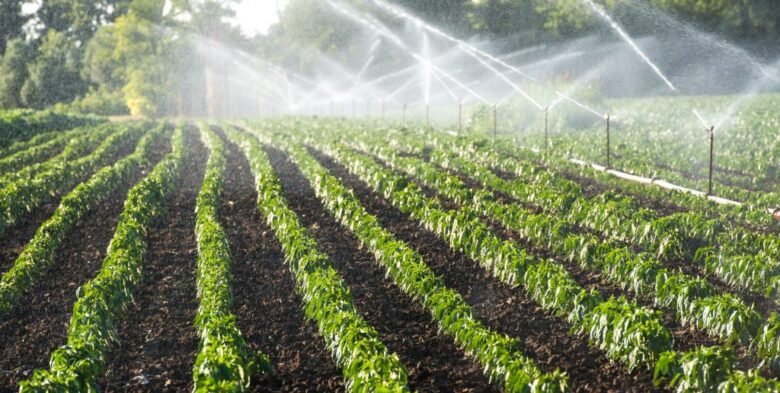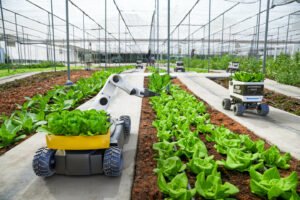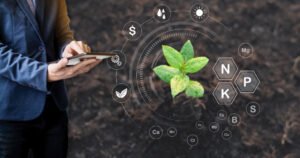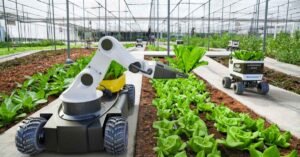The use of technology in modern agriculture has completely changed the production methods of the past. An important improvement in this area is the use of smart irrigation systems. These systems harness the power of data, connectivity and automation to transform the way we irrigate crops. This article describes smart irrigation systems, including how they can be used to save water and increase crop yields. It also discusses their benefits and the role they play in making agriculture more sustainable and efficient.
Smart Irrigation Systems: What They Really Mean
1. Make Decisions based on Data
Smart irrigation systems use instantly updated data to decide when, where and how much to water crops. By placing sensors underground, using weather stations or even collecting data from space, we can learn more about our environment and ensure watering is managed correctly.
2. Save Time with Automation
An important part of a smart irrigation system is automation. Based on real-time data and set parameters, these systems can handle the irrigation process automatically. Automating tasks such as changing watering schedules and controlling water flow can increase efficiency and reduce the need for manual intervention.
3. Remote Control and Monitoring
An important feature is the ability to remotely control and observe the irrigation system. With an internet connection, farmers can view and control their irrigation systems from anywhere. This gives them the flexibility to respond quickly to changing circumstances.
Key Components and Technologies:
1. Soil Moisture Sensor
Soil moisture sensors are placed in the root zone of plants to learn how much water is in the soil. This information can help farmers determine when to water their crops so that they don’t get too much or too little water and get just the right amount of water to promote healthy growth.
2. ET Weather Station and Controller
Weather stations and evaporation controllers (ET) are often built into smart irrigation systems. These components use the transpiration rate of plants and weather conditions such as temperature, humidity and wind speed to correctly calculate how much water a crop needs.
3. Drones and Space Images
Drones and satellite images are used in more advanced methods to obtain larger images. Drones can fly over large agricultural areas and satellite data can provide farmers with information about the overall health of their crops, helping them make informed decisions about when and how much to water.
Advantages of Smart Irrigation Systems:
1. How to Save Water
The main benefit of smart irrigation systems is water savings. By adapting to immediate conditions and adapting irrigation to the needs of each crop, these systems significantly reduce water waste, making agriculture more water-sustainable.
2. Use Less Energy
Smart watering systems save energy by preventing unnecessary watering and ensuring efficient use of water. This energy economy is not only good for the environment but also helps farmers save money.
3. Increasing Crop Yields
Smart irrigation systems can enable more precise irrigation, increasing food production. These systems create optimal growing conditions by providing plants with the right amount of water at the right time. This keeps the plants healthy and increases yield.
Agricultural Use:
1. Precision Sprinklers and Drip Irrigation in Agriculture
Drip irrigation and precision sprinklers are often built into smart irrigation systems. These technologies deliver water directly to the roots of plants, so less water is lost through evaporation and more water is used efficiently.
2. Fertigation
Some systems allow for fertigation, allowing farmers to add fertiliser to the soil through a watering system. This precise application of nutrients ensures plants get what they need to grow, resulting in optimal crop growth.
3. Adaptive Planning
An important use is adaptive planning, which changes water application based on changing conditions such as the weather, the amount of water in the soil and the growth stage of the crop. This flexible method ensures that plants receive the right amount of water during growth.
Sustainability and Environmental Impact:
1. Reduce Runoff and Erosion
Smart irrigation systems deliver water directly to the root zone, reducing runoff and soil erosion. This targeted approach prevents excess water from flowing through the fields and washing away nutrients and soil.
2. Minimise Chemical Spills
Minimise chemical leaching by using efficient watering methods. Smart irrigation systems ensure high water quality and a healthy environment by managing water flow and quantity. This reduces the chance of chemicals ending up in the groundwater.
3. Resilience to Climate Change
Smart irrigation systems can better adapt to climate change because they can adapt to changing weather conditions. When severe weather occurs, these systems can change the watering schedule of crops, helping farmers deal with the problems caused by environmental changes.
Questions and Things to Think About:
1. Initial Investment Costs
Implementing a smart irrigation system requires an initial investment in sensors, tools and integration technology. Despite the huge long-term returns, farmers can be deterred from adoption due to costs.
2. Technical Training and Skills
To set up, implement and solve problems with smart irrigation systems, farmers need to know how to use technology. To provide farmers with the skills they need, training programmes and user-friendly interfaces are important.
3. Data and Connection Security
Data security is a concern because of how dependent we are on our data and connections. To ensure that people can trust smart irrigation systems, it is important to ensure that private data is stored and transmitted securely.
Prospects and New Ideas for the Future:
1. Augmented Artificial Intelligence (AI)
When artificial intelligence is added to smart irrigation systems, they can become even more powerful and flexible. Artificial intelligence algorithms can look at massive data sets, learn from patterns and make predictions to help achieve more accurate irrigation control.
2. Blockchain to Keep Track of Things
Blockchain technology could make it easier to track water during the watering process. By tracking and protecting water use data, farmers and other stakeholders can clearly understand how long irrigation practises will last.
3. Network of Cooperating Farmers
In the future, farms close to each other may be able to collaborate on growing crops and share data and ideas. This joint approach could improve water use on a larger scale, especially in places where water is scarce.
Conclusion:
Smart irrigation systems are a game changer for agriculture because they provide a greener, more technologically advanced way to treat water. Using these methods is becoming increasingly important as the world strives to feed a growing population while protecting the environment. By using smart irrigation, farmers can not only increase yields and efficiency but also help achieve the larger goals of water conservation and permaculture, making future food production greener and more flexible.
FAQs:
1. How can smart irrigation systems promote water conservation in agriculture?
Smart irrigation systems use real-time data to accurately adjust irrigation to crop needs, saving water. This targeted approach minimises water waste, optimises water use, and promotes permaculture practises.
2. What technologies are typically integrated into smart irrigation systems, and how do they work together?
Smart irrigation systems integrate technologies such as soil moisture sensors, weather stations, and automation to achieve efficient irrigation. These components work together to collect instant data, analyse environmental conditions, and automate the irrigation process based on predefined parameters.
3. How do smart irrigation systems impact agricultural energy efficiency?
Smart irrigation systems optimise energy consumption by automating the irrigation process and preventing unnecessary watering. This will increase energy efficiency, promote environmental sustainability, and save farmers money.
4. Can smart irrigation systems be applied to different types of irrigation methods, such as drip irrigation or precision sprinklers?
Yes, smart irrigation systems can be seamlessly integrated with a variety of irrigation methods, including drip irrigation and precision sprinklers. These technologies increase the efficiency of these methods by ensuring accurate delivery of water to the root zone of the crop.
5. What challenges might farmers face in adopting smart irrigation systems, and how can they be addressed?
Challenges in adopting smart irrigation systems include initial investment costs, the need for technical skills, and data security concerns. To address these challenges, financial incentives, training programmes, and safe technical solutions are needed to enable farmers to adopt these advanced irrigation methods.



